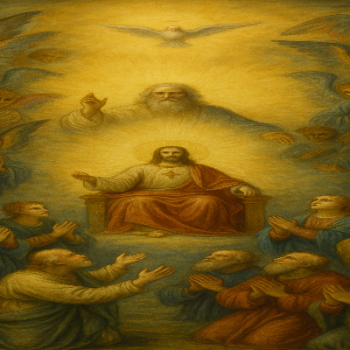
“We did not follow cleverly devised myths when we made known to you the power and coming of our Lord Jesus Christ, but we had been eyewitnesses of his majesty.” 2 Peter 1:16.
Who is Jesus? To the detriment of Christ and human understanding of Him, there have been numerous efforts to reduce Christ to a particular archetype. For some, He did not exist. For others, Jesus was a type of guru, or a first-century Jewish rebel, battling the Roman Empire. Finally, for many, He is the incarnate God.
The general thread that runs through most of these various archetypes of Jesus is an effort to shrink Him to fit into whatever worldview or argument that one supports.
In the following work, I will discuss some of these archetypes and show the reasoning behind them, and, with the exception of one, show why each of these archetypes is an error.
The Jesus that Wasn’t
A blanket denial of the existence of a historical Jesus is becoming increasingly rare and often reserved for the lunatic fringe of atheism. The purpose of this view is relatively straightforward; if one can deny the existence of Jesus, one can undermine all of Christianity in one fell swoop.
The absolute denial of the existence of Jesus seeks to deny the numerous accounts of Him within the Gospels as well as from extra-biblical sources.
There are, of course, many who would like to dismiss the historicity of the Bible, but to do so is not only illogical but also poor scholarship. The vast number of manuscripts, the dating of the texts, and the archaeological evidence are highly persuasive. So much so that the Smithsonian Institution’s Department of Anthropology concluded that “The historical books [of the Bible] are as accurate historical documents as any that we have from antiquity and are, in fact, more accurate than many of the Egyptian, Mesopotamian, or Greek histories. These Biblical records can be and are used as are other ancient documents in archaeological work.”
There is ample extra-biblical evidence as well. Indeed, within a few decades of Jesus’ lifetime, He is mentioned by Jewish and Roman historians and in dozens of Christian writings.
The biblical scholar Frederick Fyvie Bruce states that the Samaritan and Greek historian Thallus mentions Jesus some twenty years after the death of Jesus. Thallus’s proofs for the existence of Jesus were confirmed by another Greek historian Sextus Julius Africanus, and later by the Byzantine historian George Syncellus in his Chronicle (circa 800).
These proofs have led the skeptic and atheist scholar Bart Ehrman to conclude that Jesus “Certainly existed, as virtually every competent scholar of antiquity, Christian or non-Christian, agrees, based on certain and clear evidence.”
Accepting the existence of a historical Jesus does not, of course, end the question. While Jesus existed, perhaps He was nothing more than a good man or moral teacher? To that archetype, I turn to next.
Jesus as a guru
“New age” is sufficiently eclectic as to make a definition difficult. Suffice to say that the new age movement is a philosophy that takes an alternative approach to various beliefs and is inclusive of reincarnation, holism, pantheism, and occultism.
Unlike atheism or even agnosticism, the new age spirituality is often sympathetic to Jesus as a historical figure. Unfortunately, the new age movement seeks to interpret Jesus as a guru or enlightened master. In order to accomplish the task of reducing Jesus to a guru, the new ageists must deny much of the Old Testament prophecies concerning Jesus and any claims in the New Testament to His divinity. (See Isaiah 7:14 and John 10:30).
Of all of the archetypes regarding Jesus, this one is the most likely to reduce Jesus to an abstraction. Jesus becomes whatever people want Him to be and ignores who He really is.
In a similar vein, it is possible, but again, erroneous to reduce Jesus to just a moral teacher. This archetype of Jesus seeks to view Jesus as a first-century Gandhi or Immanuel Kant. To be sure, Jesus’ ethical teachings are critical to understanding Him. However, this view reduces Jesus to His moral instruction and, like the guru version, ignores the rest of what is known about Christ.
The last (false) archetype is the zealot version of Jesus.
Jesus as a Jewish rebel
This archetype of Jesus seeks to reduce Him to one of the Jewish insurrectionists struggling against the Roman Empire’s control of Israel. This view of Jesus is born from the twenty-third chapter of Luke. In it, the Sanhedrin, Jewish elders, accused Jesus of inciting an insurrection against the Roman Empire.
Like the other archetypes, Jesus as an insurrectionist requires one to ignore most of the Scriptures. While several verses give the lie to this particular archetype, I will briefly discuss only two.
The first rather famous verse that disputes this archetype appears in all of the synoptic gospels. In response to a question of whether the Jews should respect (and pay taxes to) the Roman government, Jesus replies that they should “Render therefore unto Caesar the things which are Caesar’s; and unto God the things that are God’s.” (See Matthew 22:15-21). Not the words one would expect from a rebel.
The second verse which argues against this archetype occurs after Jesus has been arrested. The Roman Governor, Pontius Pilate, asks Jesus why the Jewish elders have accused Him. To which Jesus responds, “My Kingdom does not belong to this world. If my Kingdom did belong to this world, my attendants would be fighting to keep me from being handed over to the Jews. But as it is, my Kingdom is not here.” (See John 18:36).
This verse makes it evident that Jesus had no political aspirations. Again, not what one would expect from a rebel.
This leaves one last “archetype.” Fortunately, this one is true.
Jesus as God
I have thus far written derogatively of the various archetypes that have come to be applied to Jesus. Yet, it is worth pointing out that these archetypes are not entirely without grains of truth. The problem with all of them is that they fail to consider the whole person of Jesus.
Only when this is done, only when one takes account of the Old Testament prophecies of Christ, only when one takes into account Jesus’ own words and actions, and only when one takes into account the observations of His apostles does one obtain a complete picture of Jesus as the incarnate God.
Only when one accepts Jesus as both a historical human being Who walked the earth and one of the three persons of the Holy Trinity does one see Jesus as He truly is.
Only when Jesus is seen as God do all these archetypes fall away, revealing the truth.












